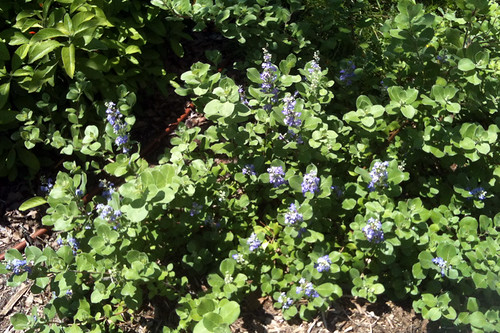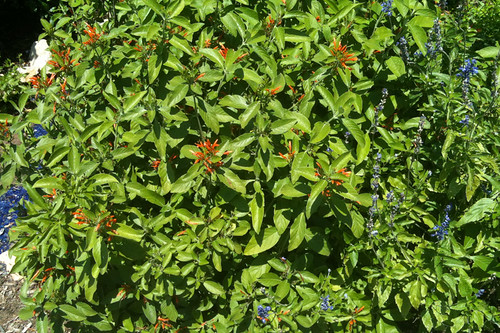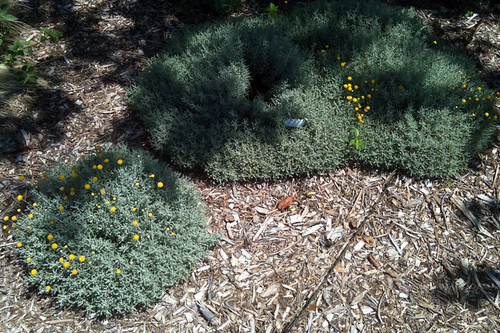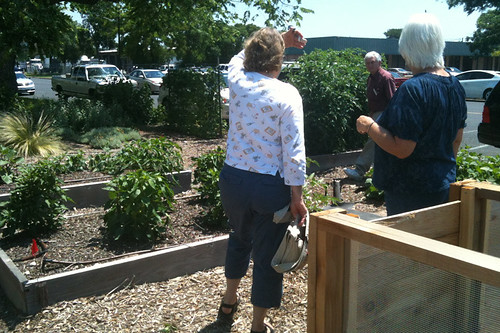
Some of the tips that I wrote down:
*Don't forget to water your trees! One inch all under the canopy out to beyond the drip line, once a month. Watering for your perennials and lawn will not be enough to hydrate your trees, so do this as a separate watering.
*Add greensand once a year around the yard for micronutrients
*Use sulphur to counteract chlorosis, identified by yellowish leaves with green veins
*Don't forget to add more mulch as it decomposes over the summer
*If you use hardwood mulch and it gets too compacted, just twist a garden fork in it to fluff it up
*Don't prune in summer, unless you're removing dead wood or deadheading. Only a few perennials need to be cut back during this time (fall asters, once, if they get too leggy)
*Fertilize perennials twice a year, once in spring and fall
*Give houseplants a "vacation" outside in the shade, especially during a rain
*Limit onion, garlic, and citrus in small compost piles
We took a tour around the Earthkind demo garden outside the Travis County AgriLife Extension office after the seminar.
Beach vitex in bloom; almost everyone in the group stopped to admire this one. When I got home, I checked out the one I planted in my side garden a few weeks ago, and there are buds! Needs at least a season or two to look this good.

I believe this was a gomphrena, but I had fallen behind our guide in the tour, so just a guess. Its tiny fuschia pompoms were spilling out onto the sidewalk.

Mexican honeysuckle and this blue sage make a striking combo.

Perfectly mounded santolina on the edge of the shaded area.

Turk's cap and artemesia (I think that's what this is, but not 'powis castle') make a great understory planting here.

Shrimp plant and turk's cap are neighbors under this tree.


Master gardeners answering composting questions














.JPG)





No comments:
Post a Comment